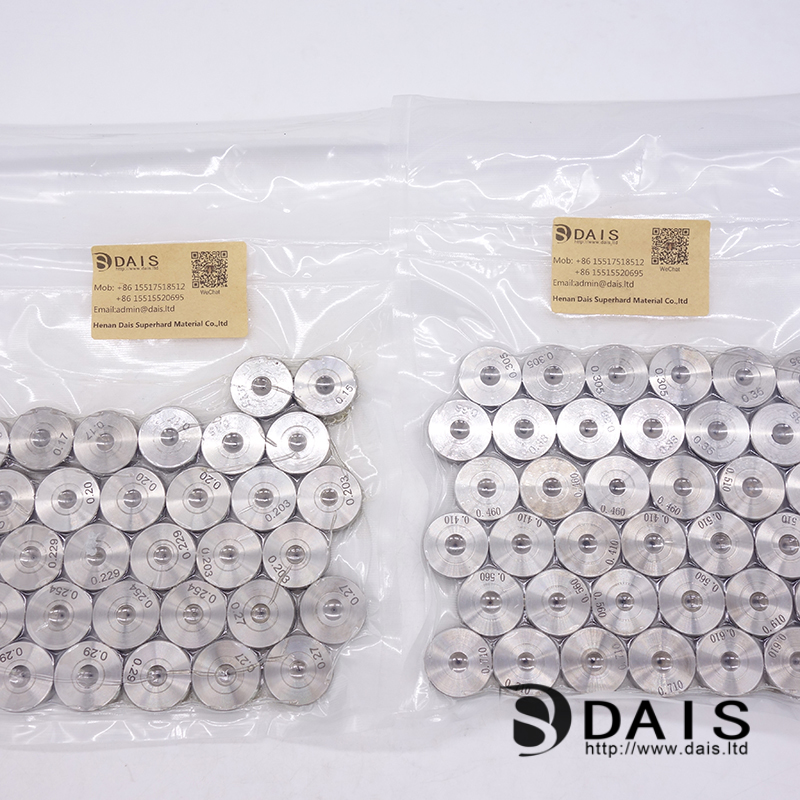Search

ADD:Building 123, Phase 3, Enterprise Base, No. 1 Lianhua Street, High-tech Industrial Development Zone, Zhengzhou, Henan, China
MOB.: +86-15517518512
MOB.: +86-15515520695
E-MAIL: admin@dais.ltd

, and petroleum exploration, diamond tools are being widely promoted for their excellent performance. The application has driven the upgrading of the technical level of related industries. Due to the nature of diamond itself, there is a consensus in the industry that diamond tools are not preferentially used in ferrous metal processing. In large-volume cutting, dressing and other processes, tools such as resin sheet grinding wheels are still used, and such tools are common. Due to the disadvantages of low processing efficiency, poor processing quality and low safety, such tools are powerless in the face of wear-resistant cast iron, cutting and grinding of the white layer of castings and other operations.
Theoretical analysis shows that diamond has the advantage of processing cast iron, and the preferred tool can completely replace the ordinary abrasive tool in the above-mentioned occasions, and can achieve the ideal processing effect.
Principle and analysis of diamond machining cast iron
Diamond as an abrasive is not suitable for machining ferrous metals, which is based on the following understanding: Fe, Co, Ni and other Group VIII element metals are carbon solvents in the molten state. Therefore, the local high temperature in the cutting area during machining The carbon atoms that make up the diamond will dissolve into the metal lattice, and the diamond abrasive grains will not be able to continue to work due to the loss of the cutting edge. At the same time, the processing of the workpiece by the diamond abrasive tool is to cut the diamond particles densely distributed on the working surface as micro-cutting edges. These cutting edges have a large number and low cutting edge. , it is easy to become unusable due to clogging.
Although cast iron is also a ferrous metal material, it has different structural characteristics from ordinary steel. Cast iron is an iron-carbon alloy with a carbon content greater than 2.11%, and the carbon content is more than twice that of steel. Except for white cast iron, the carbon in cast iron mainly exists in the form of free graphite. Therefore, the cast iron structure can be considered as the distribution of different shapes, sizes and quantities of graphite on the matrix of the steel structure. These properties of cast iron make the application of diamond tools possible.
First of all, the matrix structure with high carbon content and free graphite make the cast iron produce a high carbon atomic concentration atmosphere around the diamond cutting edge during the cutting process, which slows down the affinity and dissolution process between the iron metal and the diamond cutting edge. The diamond cutting edge is protected from erosion; at the same time, the high content of carbon in the matrix structure exists in the form of hard and brittle Fe3C, which reduces the toughness and plasticity of the matrix, making it more suitable for diamond cutting.
Secondly, the existence of free graphite in cast iron further improves the machinability: graphite, as a soft non-metallic component, cuts the continuity of its steel matrix structure, reduces the effective cross-sectional area for load bearing, and is in the graphite and steel structure. Microscopically, the joints lead to stress concentration, which reduces the strength and plasticity of cast iron, and makes the chips generated by the diamond cutting edge brittle and easily broken, and quickly separates from the cutting edge surface by virtue of the good lubrication effect of graphite, reducing iron metal and diamond. Thermal contact time reduces thermal damage and also prevents chips from clogging the cutting edge clearance. In addition, the drop of graphite on the grinding surface forms tiny voids, and the temperature of the grinding zone can be lowered by the adsorption and storage of the coolant.
Through the above principle analysis, it can be considered that a properly designed diamond tool should be able to meet the processing requirements of cast iron. Like other application fields, diamond tools will change the unsatisfactory status quo.
Application examples of diamond tools In the
process of cutting and dressing cast iron, a high grinding rate is required, so the cutting force and the amount of cutting force on the cutting edge of the tool are large, which requires the tool bond to have a high control of the diamond abrasive. ability, and maintain a high cutting height, which is also a requirement to prevent clogging.
According to the above analysis, the diamond tools manufactured by the electroplating process can meet the requirements of high holding force and cutting edge height, and the self-sharpening problem can be eliminated by the single-layer large-grain single crystal arrangement. According to different operating occasions, different diamond tools are designed and manufactured to be put into use.
1. Diamond saw blade: used for cutting and grooving of cast iron risers, cast iron pipes, cast iron piston rings, etc.
2. Diamond grinding disc: Dressing of casting risers, burrs, burrs, etc. is an important process to achieve good appearance quality of castings. Castings are easy to form white mouths in these parts to be processed, and it is easy to contain a large amount of fillers such as quartz sand. The use of diamond grinding discs can effectively complete the operations of sand cleaning, deburring and deburring of castings.
3. Diamond drill bit: used in the drilling operation of cast iron pipes in special occasions, such as emergency repair and redirection of cast iron pipes for water supply and drainage.